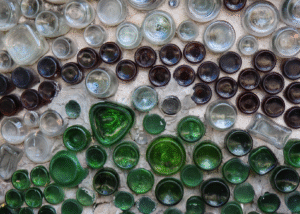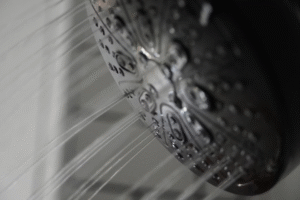It is no secret that creating energy efficient buildings is a top priority in modern real estate.
Despite the ubiquity of the movement, however, incorporating energy efficiency into daily life can still feel a bit intimidating for the average homeowner.
Fortunately, energy-efficient living goes far beyond decking out your home in solar panels and nesting behind a veil of smart glass walls. Keep reading as we touch on some small changes to help make a home more energy efficient.
Insulation
Okay, so insulation in a home isn’t a small matter. It’s rather the opposite.
But when it comes time to upgrade the home’s insulation, the subtle choice in material can make a world of difference in the total sustainability score.
All insulation products are energy efficient inasmuch as they increase R-value of the building envelope while reducing the heating and cooling requirements for keeping the home comfortable.
However, many insulation products have very high embodied energy. This means that they require significant energy resources to manufacture, transport, and install. This negates much of the energy efficiency these products achieve in application.
A more comprehensive energy efficient solution is recycled denim insulation. Manufactured from post-consumer denim, this sustainably-sourced product offers best-in-class R-value with none of the toxicity concerns of some insulation materials. It also provides top-notch soundproofing to the home, helping create one of the most comfortable interior environments possible.
If recycled insulation seems avant garde, it’s just the tip of the iceberg on the various ways to use recycled materials in home design. Some other trending ideas include:
- Reclaimed wood flooring
- Recycled glass countertops
- Salvaged wood shelves and cabinetry
- Repurposed furniture
Using recycled materials throughout the home can effectively limit energy-intensive processing, natural resource extraction, and overall embodied energy.
Low Profile Railings
There is a lot to get right when it comes to railings. Safety. Aesthetics. Ensuring the proper ADA handrail height. Durability.
What may come as a surprise, though, is that railings can also play a role in energy efficiency.
Some types of robust wood and metal railings can almost act like a wall, casting shadows over the interior that require artificial lighting to eradicate. Furthermore, railings that require attention to painting, staining, and other types of maintenance will be a source of ongoing energy consumption.
Therefore, choosing sleek, low-profile stainless steel cable railings is a great idea. They do not detract from the open interior concept and allow the flow of natural light throughout the home for reduced reliance on electricity. Furthermore, they are easily cleaned with an occasional wipe of a rag, making them one of the best choices in sustainable home design.
Society is more “plugged in” than ever.
It’s just a fact of life in the internet era.
While cutting the cord is not realistic for the vast majority of households, being strategic with electronics usage can do wonders for improving the overall energy efficiency of the home.
Many items, such as laptop computers, televisions, and microwaves, continue to use energy even when powered off. This “phantom energy” is used for such purposes as digital clocks, standby lights, and continuous network connection.
Do you really need all of those things?
By unplugging these items when not in use, you can limit the amount of phantom energy they consume. If it is too much of a hassle to unplug them every time, look into acquiring a smart power strip. This innovative product automatically cuts power to unused devices to eliminate the phantom load they may otherwise consume.
Sealing Gaps
New windows and doors are often extolled as a great way to improve a home’s energy efficiency.
Make no mistake, this can be a very impactful measure.
But when that is out of the budget, simply sealing gaps around these key transition points can be equally effective. Use a ¼-inch caulk to fortify any cracks around the frames. Add weatherstripping and door sweeps to eliminate drafts from moving parts. Apply masonry filler to exterior walls and spackle to interior walls to limit any air that may transfer via chinks in the surface.
Everyone loves a hot shower at the end of a stressful day.
But how hot is hot enough?
Lowering the temperature of the water heater by a couple of degrees can still offer a soothing, steamy shower experience while limiting the energy required for heating the water.
Every Bit Counts When It Comes to an Energy Efficient Home
Although most homeowners understand the importance of creating energy efficient structures, few realize how attainable an energy efficient home actually is. From thoughtful insulation selection to more energy-friendly household settings, consider any of the simple ideas listed above to make your home more energy efficient. For more of the latest insights in the Texas Gulf Coast, explore the content at The Katy News for the leading voices in the region!








